No products in the basket.
Blog
How Do I Know What Size My Soakaway Should Be?
A soakaway system enables you to collect water and then slowly disperse it into nearby soil without creating excessive runoff and overwhelming the underground drainage systems, which is particularly important in areas with higher than average rainfall, hard ground or steep sloping ground.
Installing a soakaway is fairly straightforward and requires little maintenance – you simply need to dig a hole to the correct size and wrap the soakaway crates in a suitable geotextile membrane, before placing them into the ground and connecting it up to your drainage system, which would usually be 110mm drainage pipe.
However for obvious reasons it’s very important you pick enough crates of the correct size to hold the correct amount of water that you need to drain. Otherwise the system may overwhelmed and won’t be able to cope with the amount of water meaning the standing water issues remain.
In this soakaway size calculator guide we provide guidance on soakaway sizing, along with some additional constraints that you should consider before you get started.
Most Commonly Used Size
For residential applications, the most commonly used size for a soak away is one cubic metre. This is also the size that some local authorities specify within sustainable drainage standards. However as it’s only generally sufficient for a roof size of up to 50 square metres in average UK conditions, it’s advised that you always calculate the correct size you need before making a purchase. It’s also recommended that you seek installation permission from your local authority before you go ahead, and check if there are any building regulations or requirements that you need to follow.
Calculating the Correct Soakaway Size
To calculate the correct size of soakaway required (including how many individual crates are necessary) you should carry out a soil percolation test as the results will determine soil conditions (including the clay content) which will affect your soakaway design. For example if the soil drains more slowly than expected you may need a larger soakaway, or if the ground doesn’t drain at all then a soakaway would not be suitable.
The percolation test should be the first test you perform, but there are other calculations that are required to determine the exact size of soakaway required such as the roof measurements and annual rainfall. Unfortunately no automatic soakaway size calculator exists yet – but we are working on this and we hope to have something available here soon!
Measuring a Roof
If you have a gable roof, you can calculate it’s surface area by measuring its length from end to end, then measuring it’s slope height from the eaves to the ridge – you may also be able to find these measurements on a copy of the building plans for your home or property. You then need to multiply the length by the slope height, and double the number to calculate the total area – in short, the calculation is Roof Length x Roof Slope Height x 2 = Roof Area.
For more complicated roof shapes, it’s recommended that you split the roof into sections and work out the sizes of each section, then add the measurements together for a total area.
For a more detailed guide on roof area calculations check out our Are you thinking of installing a soakaway drain? blog post here.
Crate Capacity
You can follow the general guide below to find out how many crates you need depending on the combined capacity of the brand and type of soakaways you’re looking to purchase. Please note that this is a very general rule of thumb and is simply a “guesstimate”. We strongly recommend consulting a drainage engineer and having the all of the calculations and tests performed correctly before proceeding.
- 50m² requires crates with a water storage volume of 1.0m³ (1000 litres)
- 60m² requires crates with a water storage volume of 1.2m³ (1200 litres)
- 80m² requires crates with a water storage volume of 1.6m³ (1600 litres)
- 100m² requires crates with a water storage volume of 2.0m³ (2000 litres)
So as a very basic rule of thumb, for 50m2 of roof area you may be able to get away with 1m3 of water storage space. Then all you need to do is simple decide on the type of soakaway crate you require, and divide 1m3 by the volume of each individual crate.
So if we take our Brett Martin Stormcrate crates as an example, each crate holds 0.25m3 of water, so 1m3 divided by 0.25 = 4 crates required.
Each Brett Martin crate measures 1200mm long, 600mm wide and 347mm high, so you’d need to bear these measurements in mind when deciding on how big to dig your hole.
Other Considerations
In addition to choosing the right size soakaway, it should also be installed in a location that’s at least 5 metres from the wall of a house, building or retaining wall, so check you have enough space before you begin. It’s also important that a soakaway construction isn’t positioned in an area where the water may become contaminated, and it shouldn’t be located near another rainwater soakaway – where this isn’t possible, you should consider a viable alternative to soakaway crate system.
Complete Kits to Save Time and Money
At EasyMerchant we offer a range of durable soakaway crates, attenuation tanks and drainage crates, including complete soakaway crate kits which include soakaway crates, non-woven geotextile membrane, waterproof tape, and cable ties to complete a full installation. Our expert team can also offer guidance and information to ensure you order items with the right dimensions and volume.
Shop Soakaways:
(28)
From £228.03 Excl. VAT
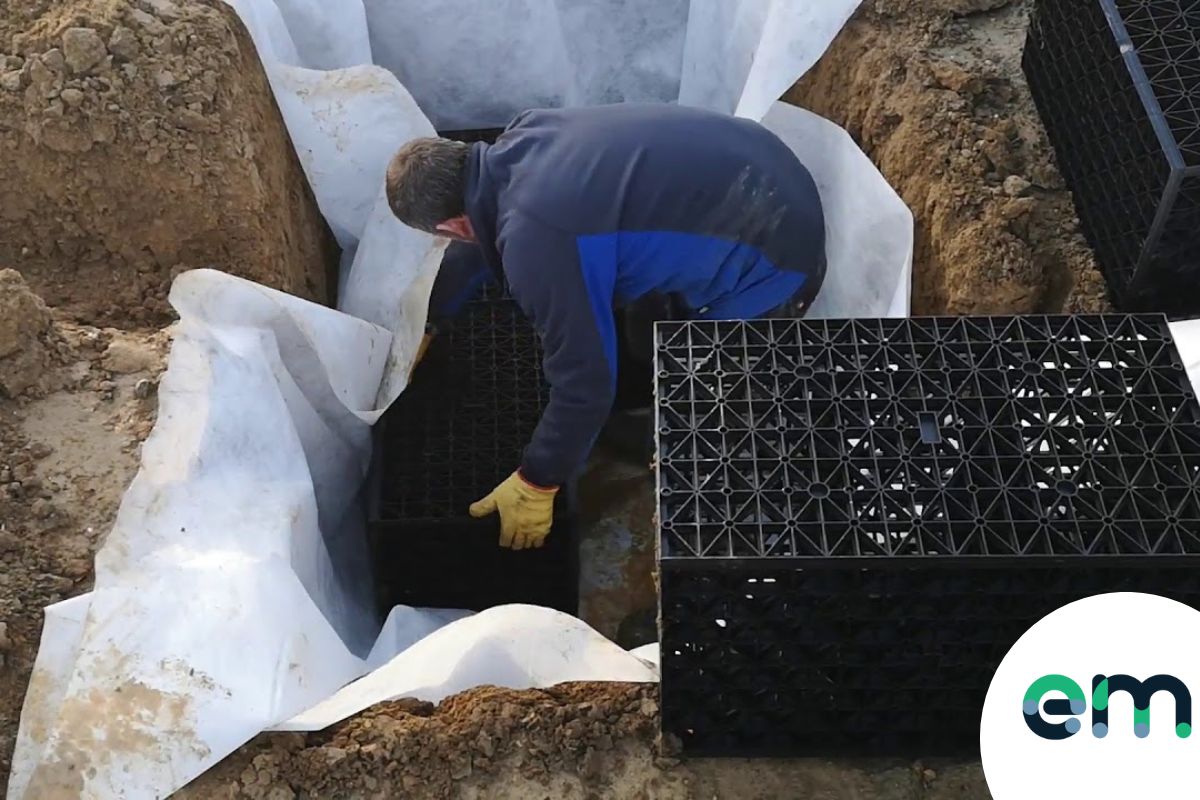
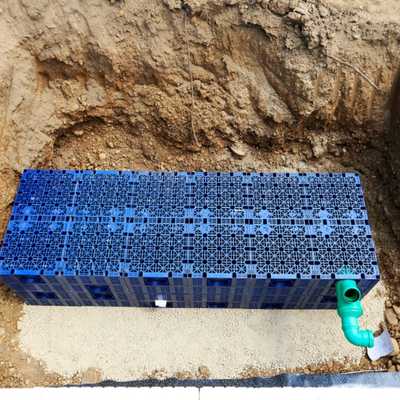
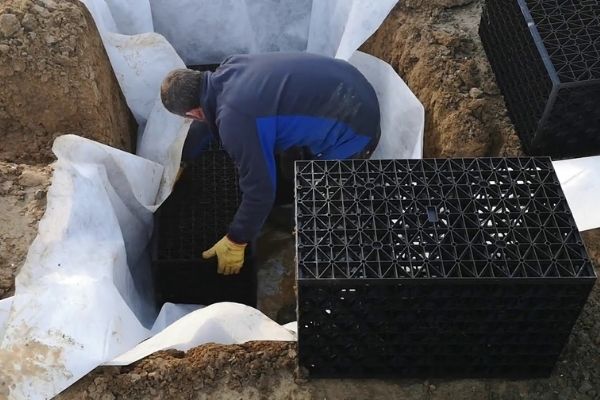
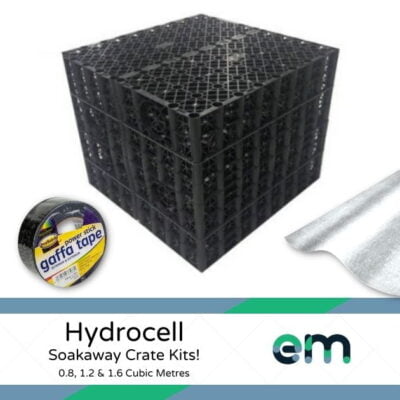
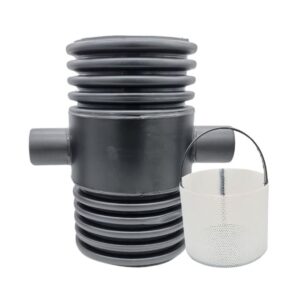
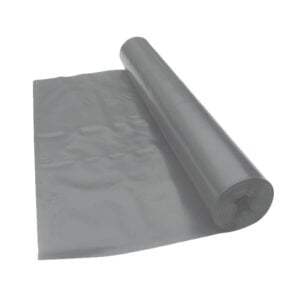
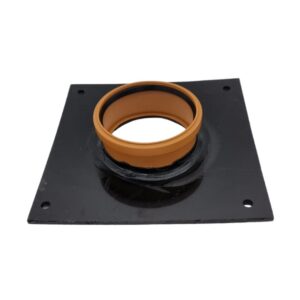
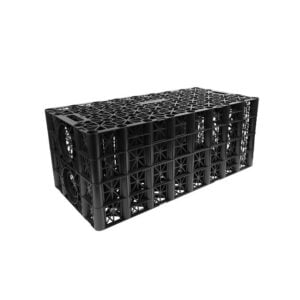
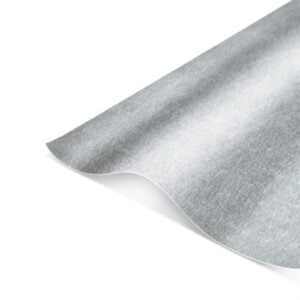
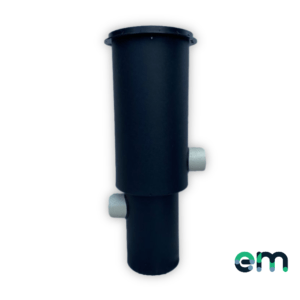
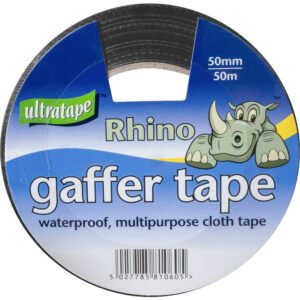
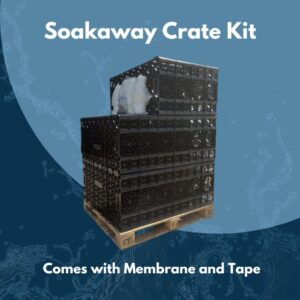
Hiya I need to know what I need for my soakaway.
My roof for my exstention is 23.44m2
I need too know what size Crete system I need for the building inspector
Hello David,
There are a few tests which need to be done prior to installing a soakaway system including a percolation test to ensure that the ground is suitable for a soakaway.
With regards to what size your soakaway should be, this should be calculated by a drainage engineer for the most accurate result, however a general rule to follow would be 1m³ of water storage per 50m² of roof area. Based on this I would think that our smallest soakaway crate kit which provides 0.75m³ water storage would be suitable but again, this is just a rough estimate.
I hope this helps!
Kind Regards
Lainey
Hi my roof is 15meters square on a single storey terraced house, how many crates do i need. The ground is also clay
hello my building control asked has tole me I need a 2m x 2m and 1.1m deep rubble filled soakaway at my property.
Question is if i use creates will what ones and how many will I need.
I believe creates are more effective at dispersing the water
hello my building control asked has tole me I need a 2m x 2m and 1.1m deep rubble filled soakaway at my property.
Question is if i use creates will what ones and how many will I need.
I believe creates are more effective at dispersing the water